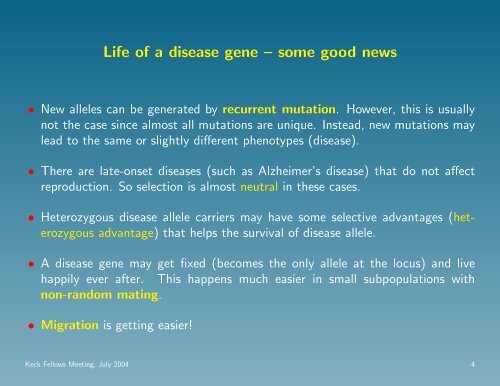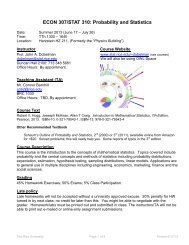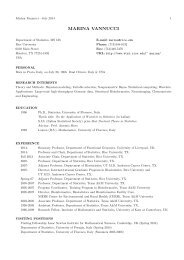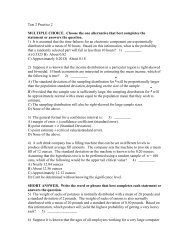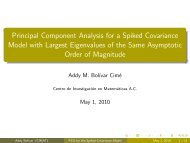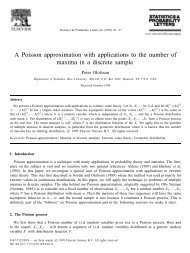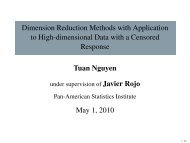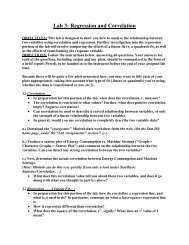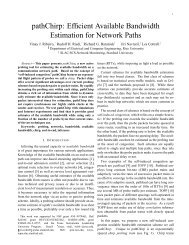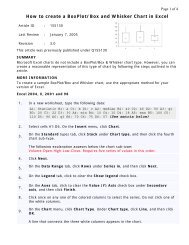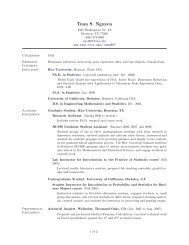slides in pdf format - Department of Statistics - Rice University
slides in pdf format - Department of Statistics - Rice University
slides in pdf format - Department of Statistics - Rice University
You also want an ePaper? Increase the reach of your titles
YUMPU automatically turns print PDFs into web optimized ePapers that Google loves.
Life <strong>of</strong> a disease gene – some good news<br />
• New alleles can be generated by recurrent mutation. However, this is usually<br />
not the case s<strong>in</strong>ce almost all mutations are unique. Instead, new mutations may<br />
lead to the same or slightly different phenotypes (disease).<br />
• There are late-onset diseases (such as Alzheimer’s disease) that do not affect<br />
reproduction. So selection is almost neutral <strong>in</strong> these cases.<br />
• Heterozygous disease allele carriers may have some selective advantages (heterozygous<br />
advantage) that helps the survival <strong>of</strong> disease allele.<br />
• A disease gene may get fixed (becomes the only allele at the locus) and live<br />
happily ever after. This happens much easier <strong>in</strong> small subpopulations with<br />
non-random mat<strong>in</strong>g.<br />
• Migration is gett<strong>in</strong>g easier!<br />
Keck Fellows Meet<strong>in</strong>g, July 2004 4


